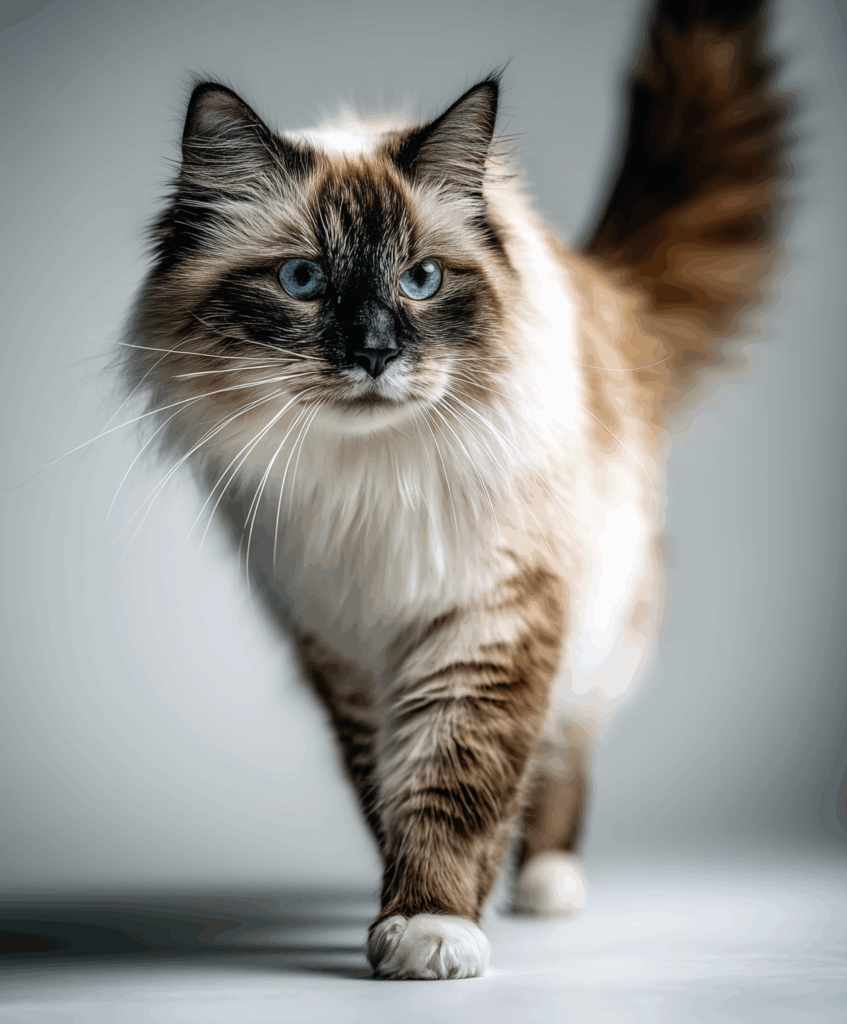
How Big Do Ragdoll Cats Get? The Complete Size Guide for You
Ragdoll cats are famous for their soft coats, gentle personalities, and tendency to go limp when held. But if you’re considering bringing one home, you’re probably wondering: how big do Ragdoll cats get?
The short answer: Ragdolls are one of the largest domestic cat breeds, with most reaching 15–20 pounds, and some males pushing 20–25 pounds at full maturity.
This guide breaks down everything you need to know about Ragdoll cat size, growth stages, and what to expect when raising one.
Average Ragdoll Cat Size
- Weight:
- Males: 15–20 pounds (some can reach 25 pounds)
- Females: 10–15 pounds
- Length: 17–21 inches (not including the tail)
- Height: 9–11 inches at the shoulder
Compared to breeds like the Maine Coon, Ragdolls are slightly lighter but still much larger than Persians, Siamese, or the average domestic cat (which usually weighs 8–10 pounds).
When Do Ragdoll Cats Stop Growing?
Ragdolls are slow growers compared to most cats. While an average domestic cat is fully grown by 12 months, Ragdolls can take 3–4 years to reach their full size.
- 0–6 months: Rapid kitten growth
- 6–12 months: Teenager stage (longer, leaner body)
- 1–2 years: Filling out and gaining muscle
- 3–4 years: Full adult weight and coat development
This slow maturity is part of what makes Ragdolls so striking as adults.
Ragdoll Cat Growth Chart
Ragdolls don’t reach their full size quickly. Unlike many breeds that finish growing by 12 months, Ragdolls can take up to 4 years to mature fully. Here’s a general growth chart to help you understand what to expect:
| Age | Male Ragdoll (Average) | Female Ragdoll (Average) | What to Expect |
|---|---|---|---|
| 8 weeks | 2–3 lbs | 2 lbs | Kittens are fluffy and playful; still very small. |
| 6 months | 6–9 lbs | 5–7 lbs | Rapid growth; lanky “teenager” stage begins. |
| 1 year | 10–14 lbs | 8–10 lbs | Most cats reach near full height but still filling out. |
| 2 years | 13–18 lbs | 9–12 lbs | Muscles develop, coats thicken; cats look more balanced. |
| 3 years | 15–20 lbs | 10–14 lbs | Many are nearly at full adult size. |
| 4 years | 15–22+ lbs | 10–15 lbs | Full adult weight and structure achieved. |
How to Use This Growth Chart
- Monitor progress, not perfection – Cats don’t all follow the same timeline. Some mature earlier, others take longer.
- Focus on body condition – Your cat should feel solid and muscular, not flabby. You should be able to feel ribs without pressing too hard.
- Check with your vet – If your Ragdoll is far off these ranges, a vet visit can help rule out underlying health issues.
Why the Slow Growth Matters
Because Ragdolls mature over several years, they need steady nutrition and portion control to avoid early obesity. A kitten that’s overfed during growth may gain fat instead of muscle, which can lead to long-term health issues. Patience is key, your Ragdoll will reach their genetically determined size, but it takes time.
Male vs. Female Ragdoll Size
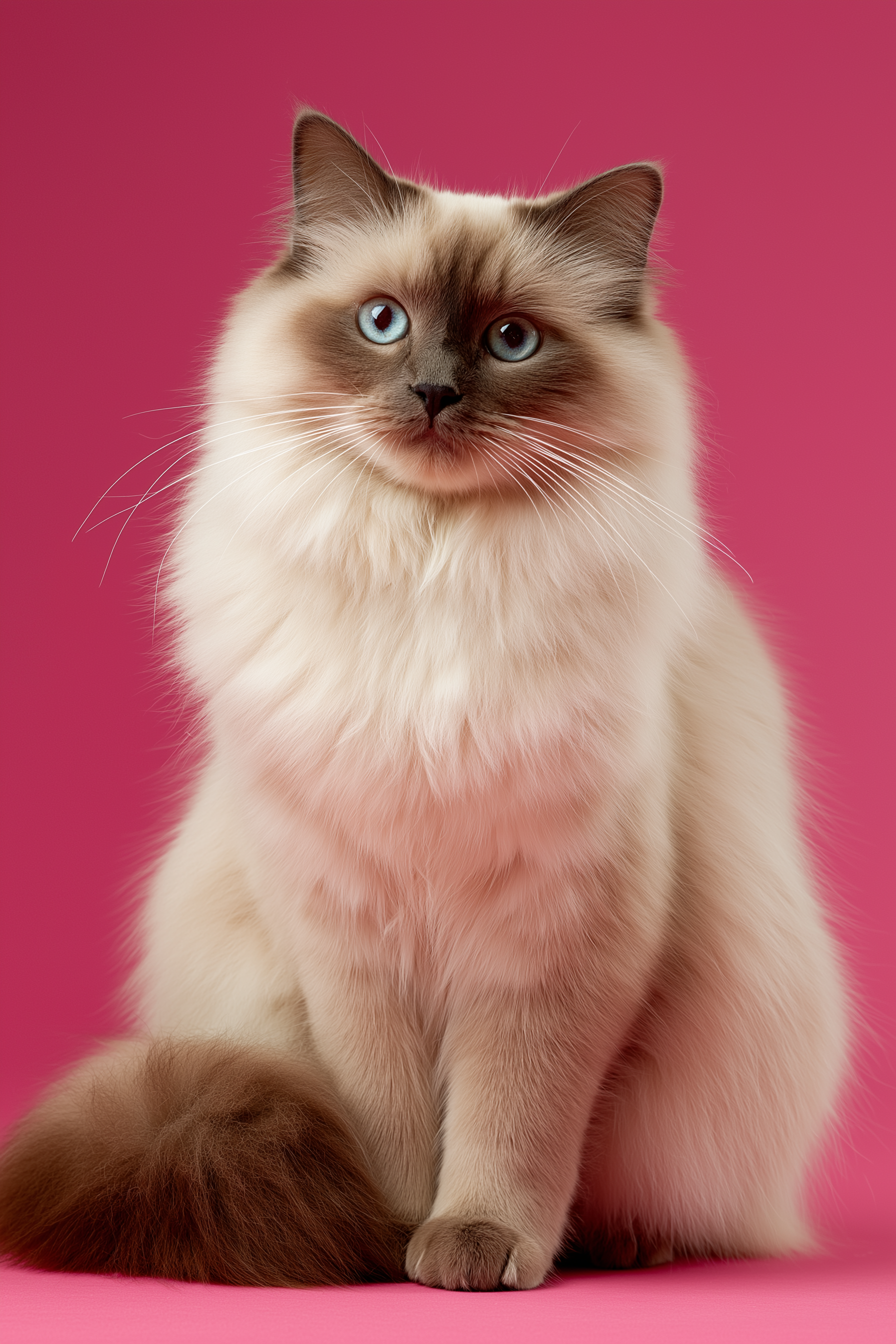
- Males are significantly larger and more muscular. If you’re looking for a cat with a truly impressive presence, male Ragdolls often fit the bill.
- Females are still big cats compared to other breeds, but they’re usually more moderate in size — closer to 10–15 pounds.
Both sexes have the same calm, affectionate personality that Ragdolls are known for.
How Big Do Female Ragdoll Cats Get?
If you’re wondering how big do female Ragdoll cats get, the answer is that they are still quite large compared to most other domestic cat breeds, but typically smaller than their male counterparts. On average, female Ragdolls weigh between 10 and 15 pounds once fully grown. Their length, excluding the tail, usually ranges from 16 to 19 inches, with a shoulder height of around 9 to 10 inches. While not as heavy or broad as males, female Ragdolls still have a substantial presence, especially when you compare them to breeds like Siamese or Persians.
Growth Timeline for Female Ragdolls
Female Ragdolls follow the same slow-maturing pattern as males. Here’s what you can expect as they develop:
- 0–6 months: Rapid kitten growth, though females often look a bit more petite and refined than their brothers.
- 6–12 months: They stretch into that adolescent, lanky stage but are still building muscle.
- 1–2 years: Most females reach their full adult height, but their body continues to fill out.
- 2–4 years: Females settle into their final weight and coat, completing the slow growth that makes Ragdolls unique.
It’s important to remember that a female Ragdoll at 2 years old may not yet be at her “finished” size, even if she looks like an adult.
Female vs. Male Ragdoll Size
- Females: 10–15 pounds, medium-large frame, softer build
- Males: 15–20+ pounds, larger bone structure, often more muscular
While the difference can be noticeable, both genders share the breed’s signature large blue eyes, semi-long coats, and affectionate temperament. For some owners, the more moderate size of a female Ragdoll makes them easier to handle and care for while still enjoying the luxury of a big, cuddly cat.
What Influences Female Ragdoll Size?
Several factors affect how big a female Ragdoll will get:
- Genetics: The size of her parents is the strongest predictor.
- Diet: High-quality nutrition supports steady, healthy growth without excess fat.
- Spaying: Altered females may be more prone to weight gain if overfed, so portion control matters.
- Exercise: Ragdolls are less active than some breeds, so daily play is important for maintaining muscle tone.
Why Female Ragdolls Are Popular
Many families choose female Ragdolls because their size feels “just right” — large enough to be impressive, but still manageable for children or smaller households. They also tend to have the same sweet, gentle personalities that make the breed famous. Read more about finding a Ragdoll kitten for adoption here.
How Big Do Male Ragdoll Cats Get?
If you’re asking yourself how big do male Ragdoll cats get, the answer is: very big. Male Ragdolls are among the largest domestic cats you can own, often reaching 15–20 pounds on average. In some cases, especially with strong genetic lines, full-grown males can tip the scale at 22–25 pounds. In terms of body length, males measure 18 to 21 inches, not including their long, plume-like tail. Their size, combined with their calm personality, makes them stand out as both impressive and gentle companions.
Growth Timeline for Male Ragdolls
Like females, male Ragdolls are slow to mature. They don’t reach their maximum size overnight, and owners should expect a multi-year growth process:
- 0–6 months: Rapid weight gain and skeletal growth, already outpacing many other kittens.
- 6–12 months: Entering the lanky stage, but males usually look heavier and more robust than females at this point.
- 1–2 years: Filling out with more muscle and developing broader features, especially around the chest and shoulders.
- 2–4 years: Full adult weight and size, with males continuing to add bulk and coat density until maturity is complete.
By age four, most males have achieved their impressive adult size.
Male vs. Female Ragdoll Size
- Males: 15–20+ pounds, large frame, muscular build, often broader heads
- Females: 10–15 pounds, medium-large frame, slightly lighter and more refined
While both sexes share the Ragdoll’s affectionate and easygoing temperament, males often give the strongest “wow factor” when visitors see just how large they are.
What Influences Male Ragdoll Size?
Several factors play a role in how big a male Ragdoll becomes:
- Genetics: Size is largely inherited. Cats from lines known for producing larger males will generally carry that trait.
- Diet: A high-quality, protein-rich diet supports healthy growth without excess fat.
- Neutering: Neutered males may have a slightly reduced metabolism, making portion control important.
- Activity: Though naturally laid-back, encouraging exercise helps males stay muscular instead of overweight.
Why Male Ragdolls Are Popular
Many families and individuals gravitate toward male Ragdolls for their sheer presence. Their size, combined with their famously docile and affectionate nature, gives them a reputation as “gentle giants.” Despite being big cats, males typically enjoy being held and lounging in laps, which adds to their appeal as companion animals.
Ragdoll Size Compared to Other Cats
| Breed | Average Weight | Height | Length |
|---|---|---|---|
| Ragdoll | 10–20 lbs | 9–11 in | 17–21 in |
| Maine Coon | 12–25 lbs | 10–16 in | 19–30 in |
| Persian | 7–12 lbs | 8–10 in | 14–18 in |
| Domestic Shorthair | 8–10 lbs | 8–10 in | 15–18 in |
Ragdolls are often described as the largest “lap cat” breed because of their weight combined with their docile, cuddly temperament.
Why Are Ragdolls So Big?
Ragdolls were selectively bred in the 1960s for their large frame, strong bone structure, and plush coats. Genetics plays the biggest role in determining your cat’s size — if the parents are on the larger side, the kittens likely will be too.
Other factors include:
- Nutrition: A high-quality diet supports steady growth.
- Neutering/Spaying: Altered cats may gain weight more easily if diet isn’t monitored.
- Activity Level: Ragdolls are calmer than some breeds, so it’s important to balance food intake with playtime.
Managing a Large Cat at Home
Because of their size, Ragdolls need:
- Sturdy cat trees (standard ones may wobble under their weight)
- Large litter boxes (at least 18 inches long)
- Strong carriers for vet trips
- Regular exercise through interactive play
Planning for these needs ensures your Ragdoll grows into a healthy, happy companion.
Best Toys and Litter Boxes for Big Cats
Owning a large breed like a Ragdoll means standard cat supplies don’t always cut it. Big cats need bigger, sturdier products that can handle their size and strength. Choosing the right toys and litter boxes not only keeps your cat healthy and happy but also saves you from constantly replacing items that aren’t built to last.
Best Toys for Big Ragdoll Cats
Because Ragdolls are heavy-bodied cats, they need toys that encourage movement while being strong enough to withstand their size. Look for:
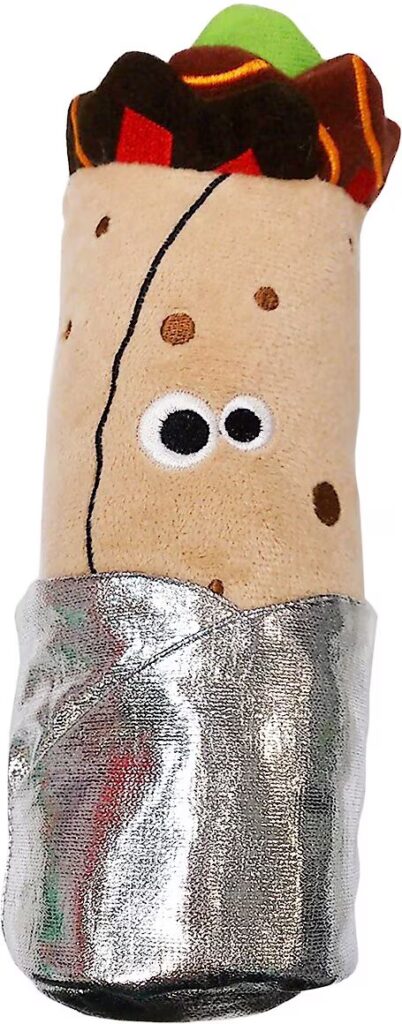
- Large kicker toys – Plush toys like the Mad Cat Big Purrito Kicker let your Ragdoll wrestle, bite, and kick without tearing the toy apart.
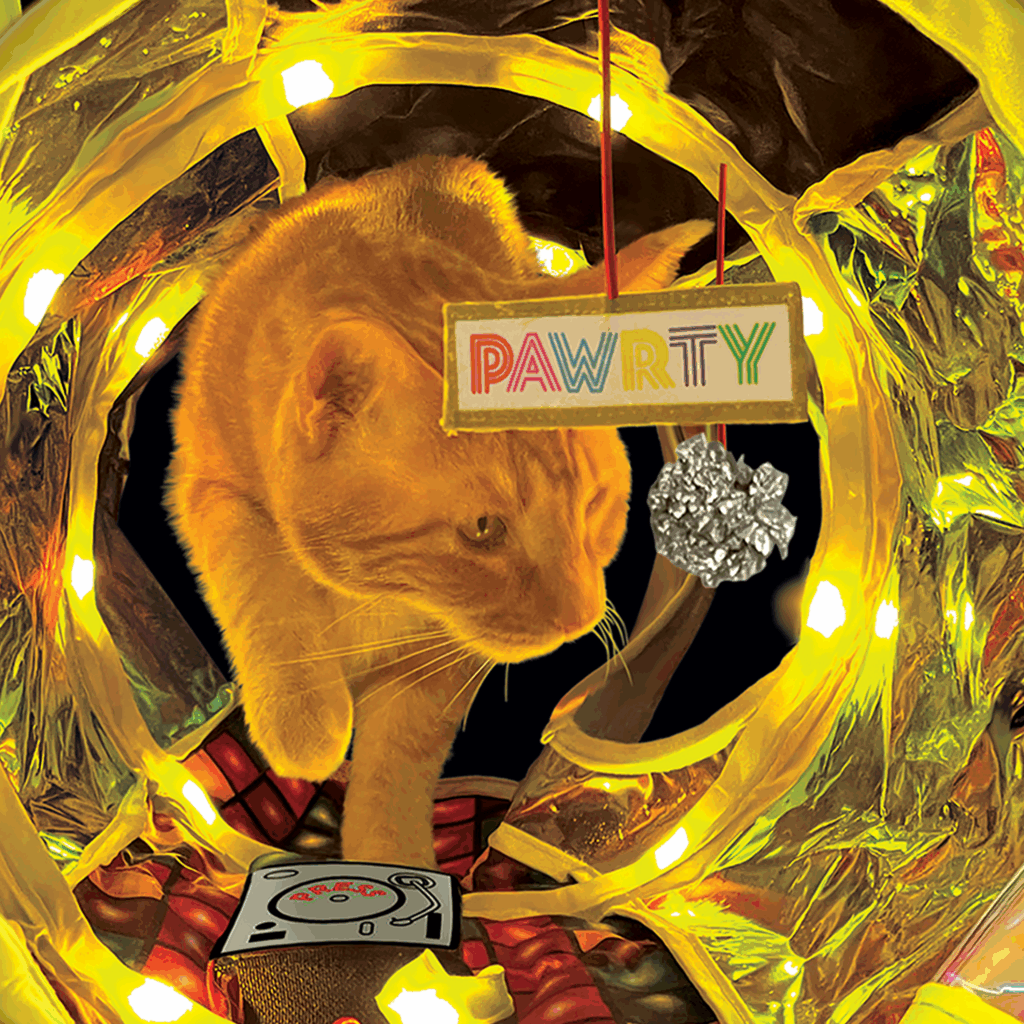
- Interactive play tunnels and caves – Options like the KONG Play Spaces Rave Cave keep big cats engaged with hiding, pouncing, and exploring.
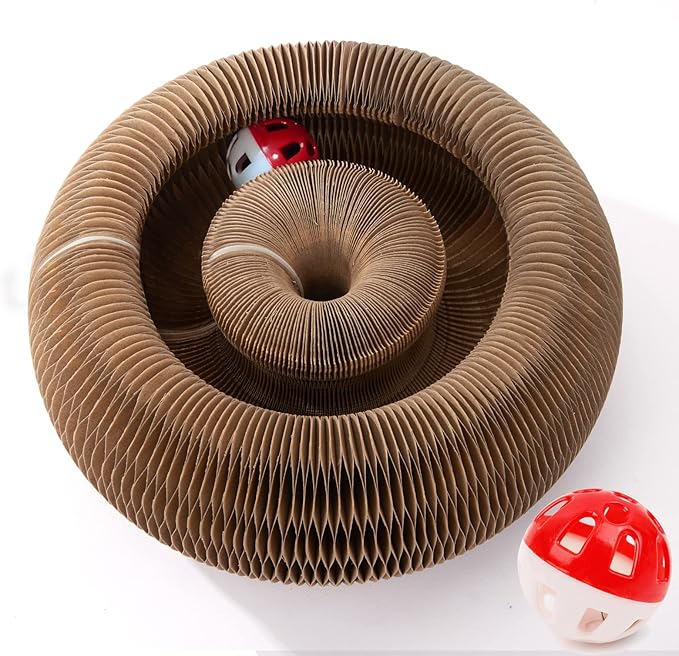
- Track and chase toys – A modular ball track such as the Whisker City Modular Track Toy offers endless batting fun and encourages daily activity.
These toys support exercise, which is crucial for maintaining muscle tone and preventing weight gain in a larger cat.
Best Litter Boxes for Large Cats
Standard litter boxes often feel cramped for Ragdolls. A spacious, sturdy litter box is essential for comfort and hygiene. Here are some great options:
- Extra-large enclosed box – The So Phresh Jumbo Enclosed Litter Box provides privacy, odor control, and enough space for a big cat to turn around comfortably.
- Stainless steel high-sided pan – The Exquisicat High-Sided Stainless Steel Box is durable, easy to clean, and resists staining or odor retention.
- Affordable oversized pan – For a budget-friendly option, the Vibrant Life Large Open Cat Litter Box offers simple but generous space at a low cost.
- Innovative systems – The Purina Tidy Cats Breeze XL helps reduce odor with pads and pellets, designed with large cats in mind.
Final Thoughts
Big cats like Ragdolls deserve products that match their impressive size. Durable toys keep them active and healthy, while spacious litter boxes provide comfort and hygiene. Investing in the right supplies ensures your Ragdoll thrives and your home stays clean and cat-friendly.
Health of Big Ragdoll Cats and How to Support Them
Because of their size, big Ragdoll cats have unique health needs that owners should be aware of. While their gentle temperament and striking looks make them an ideal companion, their large frames mean that proper care, nutrition, and veterinary attention are especially important. By understanding the common health concerns of bigger cats and how to support them, you can help your Ragdoll live a long, healthy, and comfortable life.
Common Health Concerns for Large Ragdolls
- Joint and Mobility Issues
Carrying extra weight can strain joints over time. Larger cats are more prone to arthritis as they age, especially if they become overweight. - Heart Conditions
Like many pedigreed breeds, Ragdolls are at risk for hypertrophic cardiomyopathy (HCM), a heart condition where the muscle thickens. Bigger cats may be more closely monitored for heart health since their size can mask early symptoms. - Obesity Risks
Because Ragdolls are naturally large, it’s sometimes difficult for owners to distinguish between a healthy big cat and an overweight one. Obesity can shorten lifespan and increase risks for diabetes, liver problems, and joint disease. - Urinary Tract Concerns
Big cats can be more susceptible to urinary tract issues if they aren’t drinking enough water. Proper hydration is key.
Supporting the Health of Big Cats
- Balanced Nutrition
Feeding a diet that is high in protein and moderate in fat helps maintain lean muscle mass without adding unnecessary weight. Portion control is critical. Ragdolls are not as active as some breeds, so their calorie intake needs careful management. - Weight Monitoring
Use a body condition score (BCS) chart to evaluate your Ragdoll’s body fat. You should be able to feel their ribs without pressing hard, and they should have a visible waistline when viewed from above. - Encouraging Exercise
Even though Ragdolls are known for being laid-back, playtime is essential. Wand toys, climbing trees, and puzzle feeders keep their bodies strong and prevent boredom. - Joint Health Support
Providing ramps or pet stairs helps older or heavier cats access beds and sofas without stressing their joints. Supplements like glucosamine and chondroitin (under veterinary guidance) can also support long-term mobility. - Regular Vet Visits
Annual check-ups are non-negotiable for big Ragdolls. Ask your vet about cardiac screenings for HCM, joint monitoring, and weight assessments to catch issues early.
Living Comfortably With a Big Ragdoll
Owners of large Ragdolls should also consider the practical side of caring for a big cat:
- Litter Box Size: Choose an oversized litter box, ideally at least 18–20 inches long, so your Ragdoll has space to move comfortably.
- Sturdy Furniture: Invest in strong scratching posts and cat trees that won’t tip under their weight.
- Hydration: Use a water fountain to encourage regular drinking, which helps prevent urinary problems.
Ragdoll Cat Health Summary
Supporting the health of big Ragdoll cats comes down to balanced nutrition, regular vet care, weight management, and providing a home environment suited to their size. With the right care, these gentle giants can live long, happy lives of 12–15 years or more.
Best Diet for Ragdoll Cats for Weight Management
Because Ragdolls are naturally large cats, it can sometimes be tricky to know if your cat is healthy or overweight. Many owners mistakenly think their Ragdoll is “just big-boned” when in reality the cat is carrying extra pounds. The best diet for Ragdoll cats for weight focuses on supporting their slow growth rate, maintaining lean muscle, and preventing obesity.
Understanding Ragdoll Size vs. Weight
A healthy adult male Ragdoll typically weighs 15–20 pounds, while females range from 10–15 pounds. Anything above these ranges may suggest your cat is overweight, especially if you can’t feel their ribs easily or they lack a visible waistline. Because Ragdolls mature slowly (taking up to 4 years to reach full size), kittens should not be calorie-restricted too early — but portion control is critical for adults.
Key Components of the Best Ragdoll Diet
- High-Quality Protein
Ragdolls thrive on a protein-rich diet, ideally from real meat sources like chicken, turkey, or fish. Protein builds and maintains muscle mass, which is especially important for large breeds. - Controlled Carbohydrates
Too many carbs can contribute to weight gain and diabetes risk. Choose foods that keep carbohydrates low and focus instead on meat-based formulas. - Balanced Fat Content
Moderate fat supports coat health and provides energy, but avoid overly fatty diets. Look for omega-3 fatty acids (from fish oil) to keep their luxurious coat shiny. - Moisture-Rich Options
Canned food or a combination of wet and dry helps with hydration and supports urinary health — a common concern in big cats. - Portion Control
Even the best food can cause weight problems if fed in excess. Use measuring cups, not free-feeding bowls, and stick to your vet’s recommended daily calorie intake.
Feeding Tips for Weight Control
- Scheduled Feeding: Divide meals into 2–3 portions per day rather than leaving food out.
- Use Puzzle Feeders: Slows down eating and adds mental stimulation.
- Monitor Treats: Treats should make up less than 10% of daily calories. Opt for freeze-dried meat snacks instead of high-carb biscuits.
- Regular Weigh-Ins: Track weight monthly to catch small gains before they become problems.
Foods to Consider
- Premium Low Calorie Wet Foods: Brands with high meat content and limited fillers.
- Large-Breed Formulas: Some premium cat food brands make special formulas tailored for big cats.
- Veterinary Weight-Management Diets: If your Ragdoll is already overweight, your vet may recommend a prescription formula designed for safe, gradual weight loss.
Ragdoll Cat Diet Overveiw
The best diet for Ragdoll cats for weight management is high in protein, moderate in fat, low in unnecessary carbohydrates, and portion-controlled. Combined with daily play and regular vet check-ups, your Ragdoll can stay lean, muscular, and healthy well into adulthood.
FAQs About Ragdoll Cat Size
Do Ragdolls get bigger than Maine Coons?
Not usually. Maine Coons hold the record for largest domestic cats, though some male Ragdolls can rival smaller Coons.
Are Ragdolls fat or just big?
True Ragdolls are naturally large-boned with muscular frames. However, they can become overweight if overfed, so body condition scoring is important.
Will my Ragdoll kitten stay small if the parents are small?
Yes, genetics strongly influences size. Most kittens follow the size trends of their parents.
How big is a full-grown female Ragdoll?
Typically 10–15 pounds and about 17 inches long.
Do Ragdolls keep growing after 2 years?
Yes. Many continue filling out until age 4.
Final Thoughts
So, how big do Ragdoll cats get? Expect a medium-to-giant cat that often doubles the size of the average housecat. With males averaging 15–20 pounds and females 10–15, Ragdolls are impressive in size but equally gentle in nature.
If you’re looking for a large, affectionate cat that thrives as a family companion, the Ragdoll could be the perfect fit.
Ready for a Ragdoll Kitten?
Looking for a luxury kitten with excellent health, temperament, and socialization? At AlmonteCats.com, our kittens are raised with love, education, and care—making them true “soul cats.” Waitlists fill quickly, so learn more about our kittens here.
Learn more about coat colors and genetics in our Ragdoll Cat Breed Standard and Colors.
Looking for kittens? Visit our Ragdoll Kittens for Sale page to see current availability.
Still researching Ragdoll Cats? Dive deeper into our breed guides and resources:
- Black Ragdoll Cat Prices
- How to Spot Cat and Kitten Scams Online
- Cinnamon Ragdoll Cat Colors and Cost
- Are Ragdoll Cats Hypoallergenic?
- How to Reserve Your Almonte Kitten
Each post is packed with facts, tips, and advice to help you choose the perfect kitten for your family.
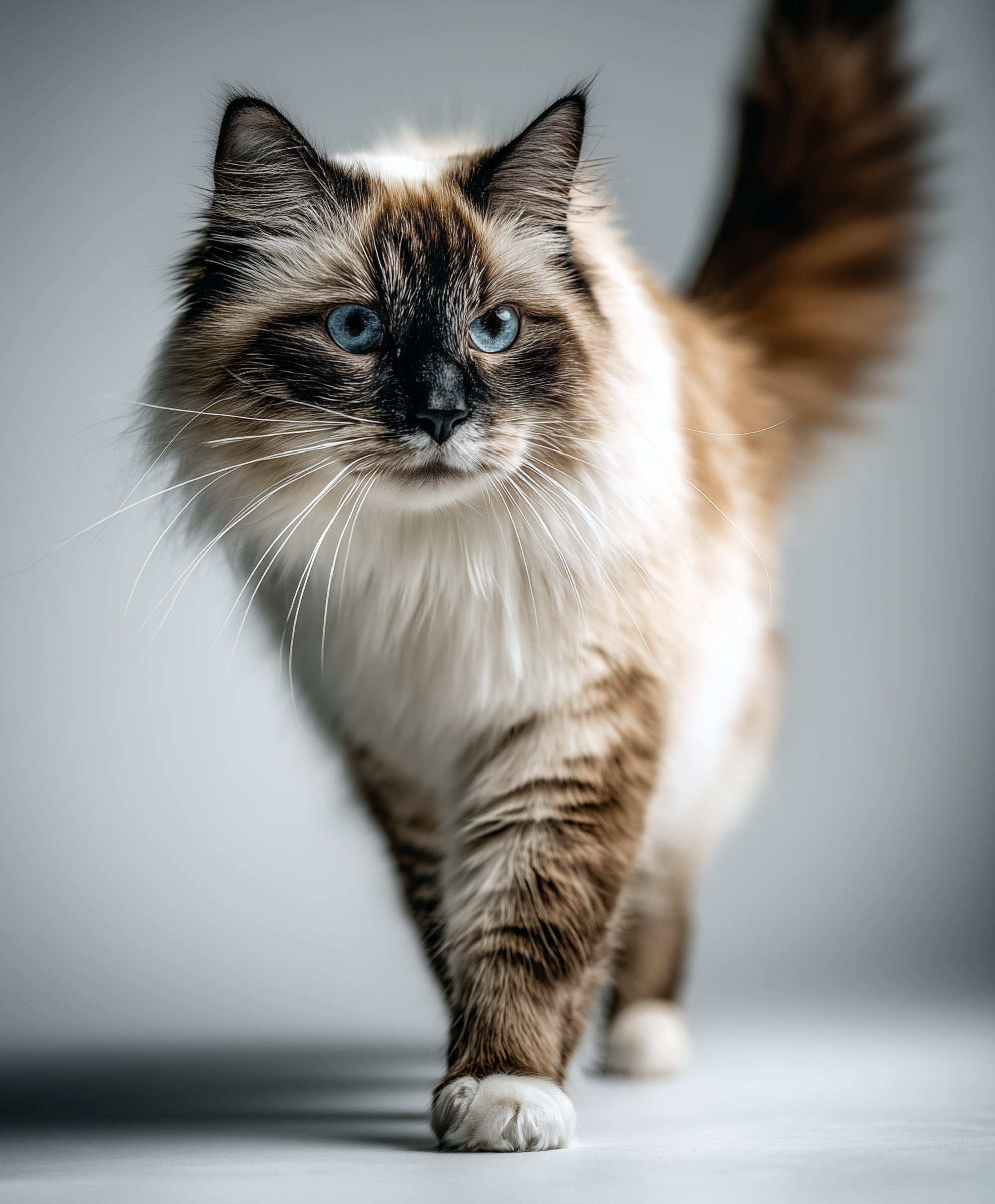
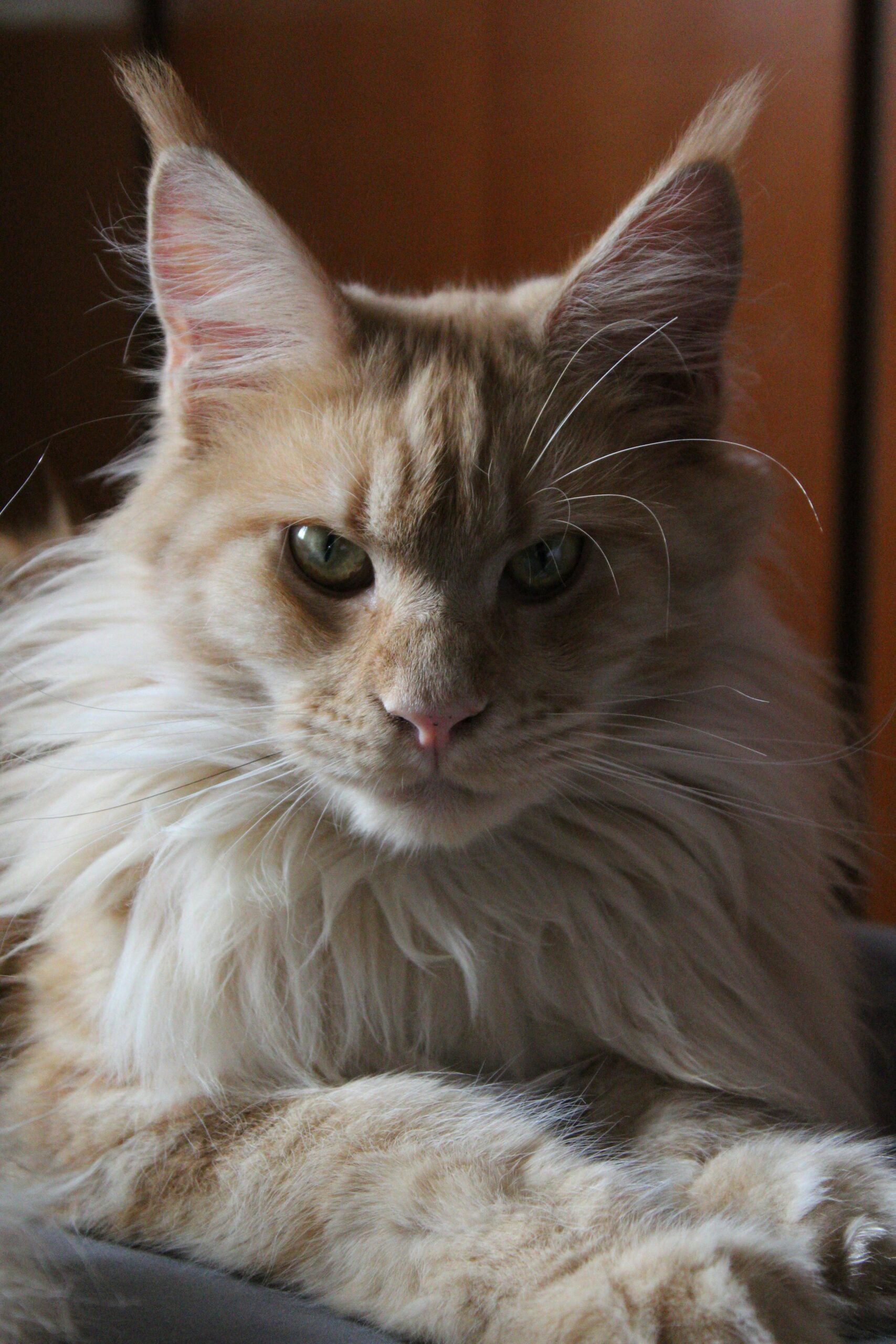
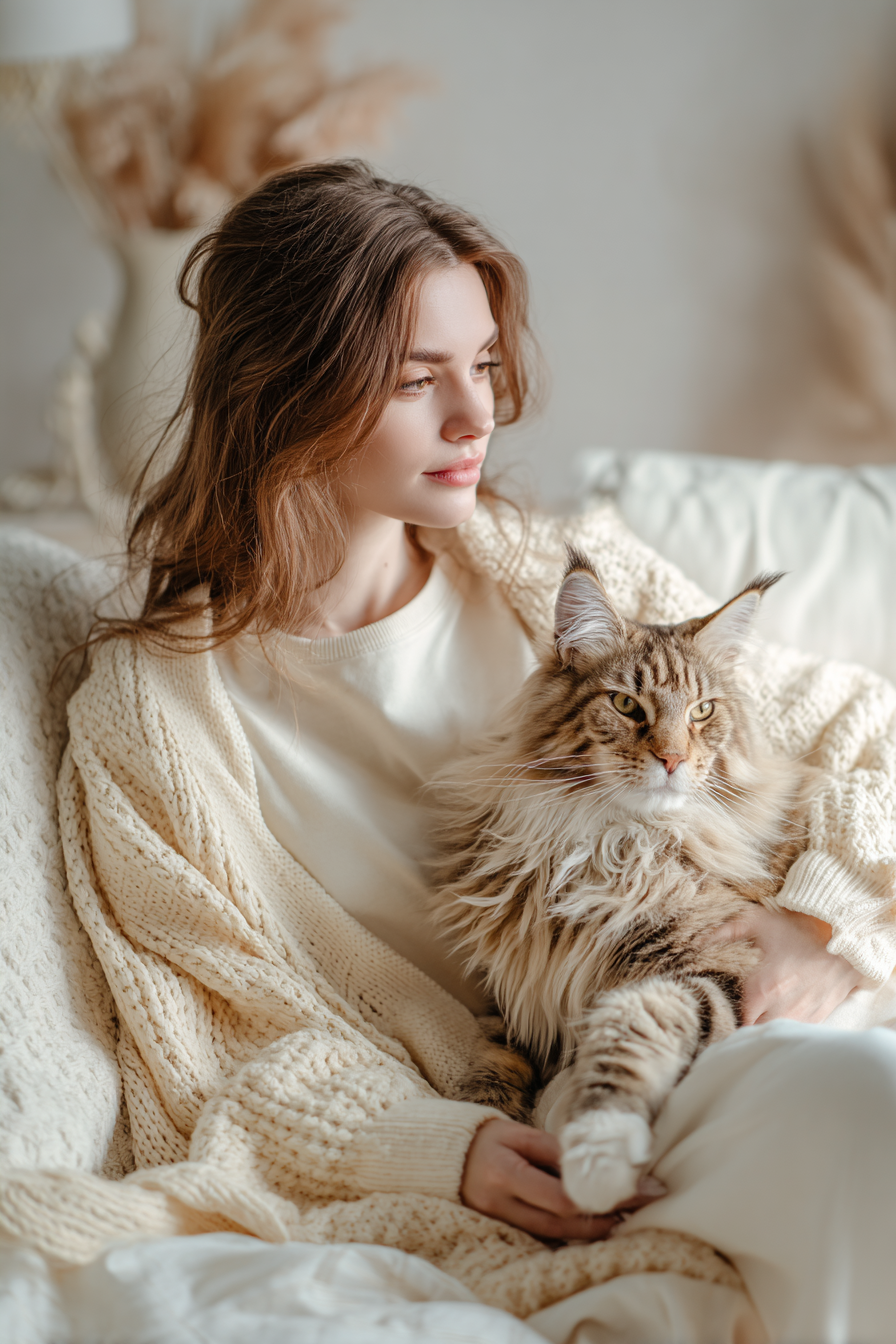
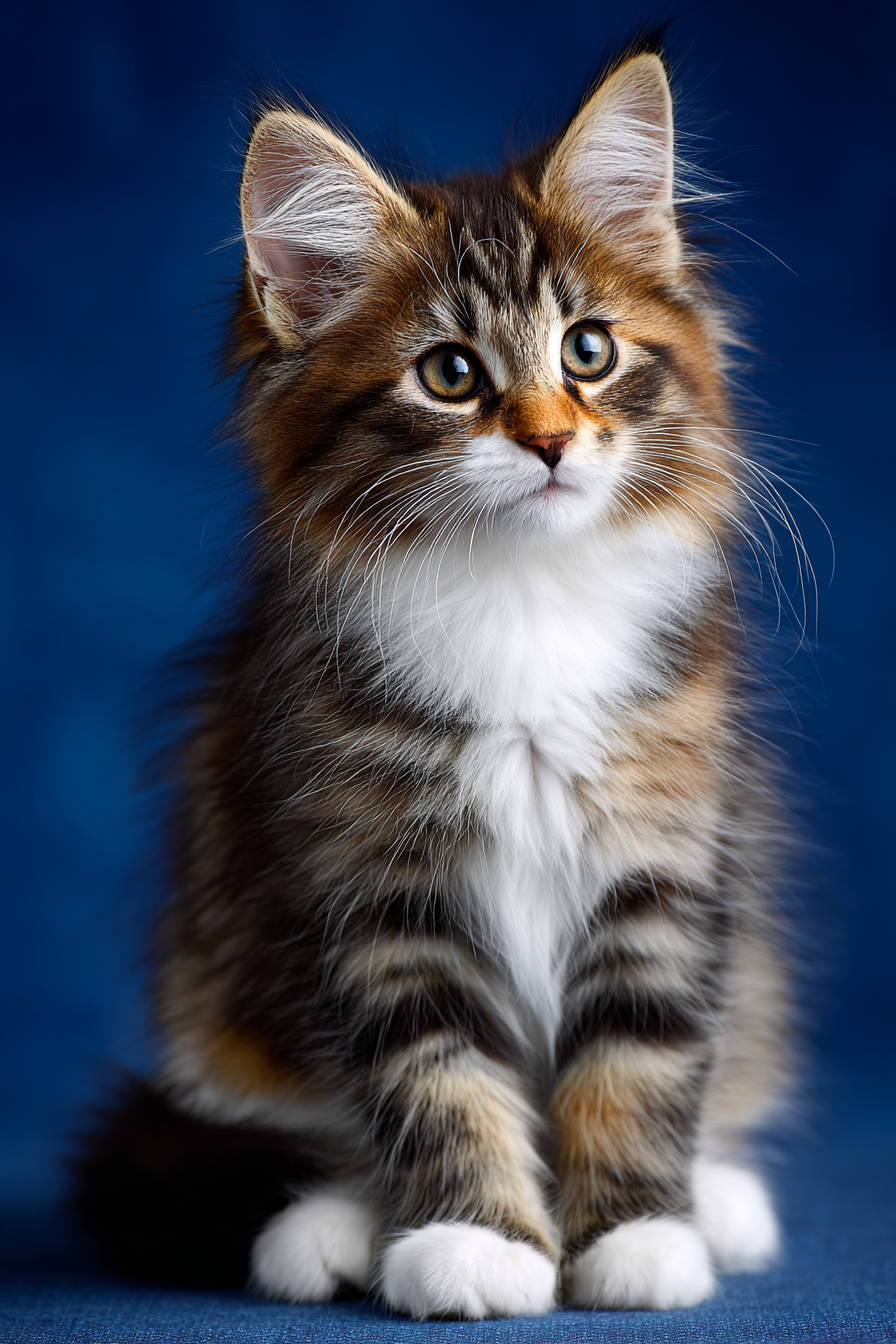
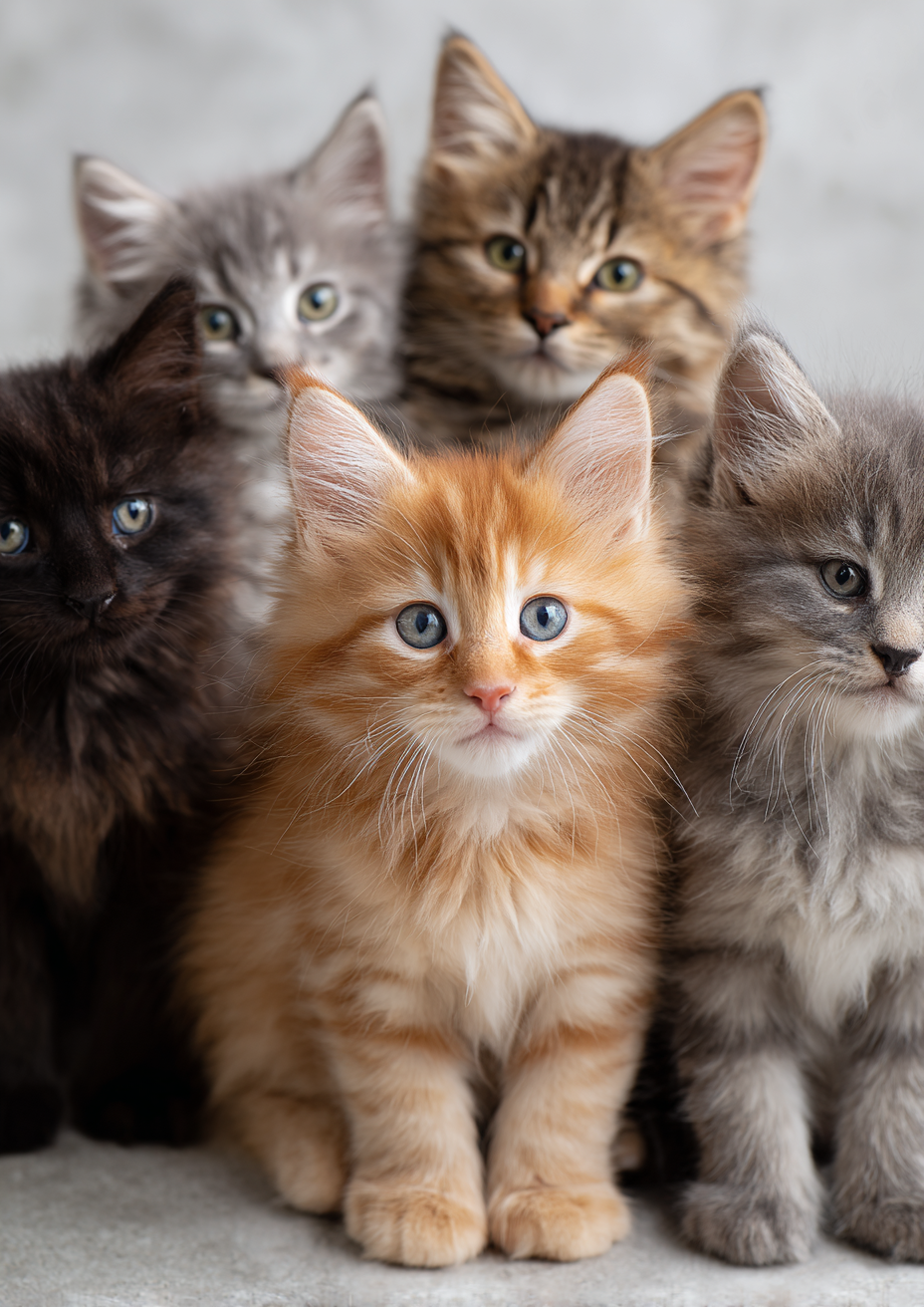
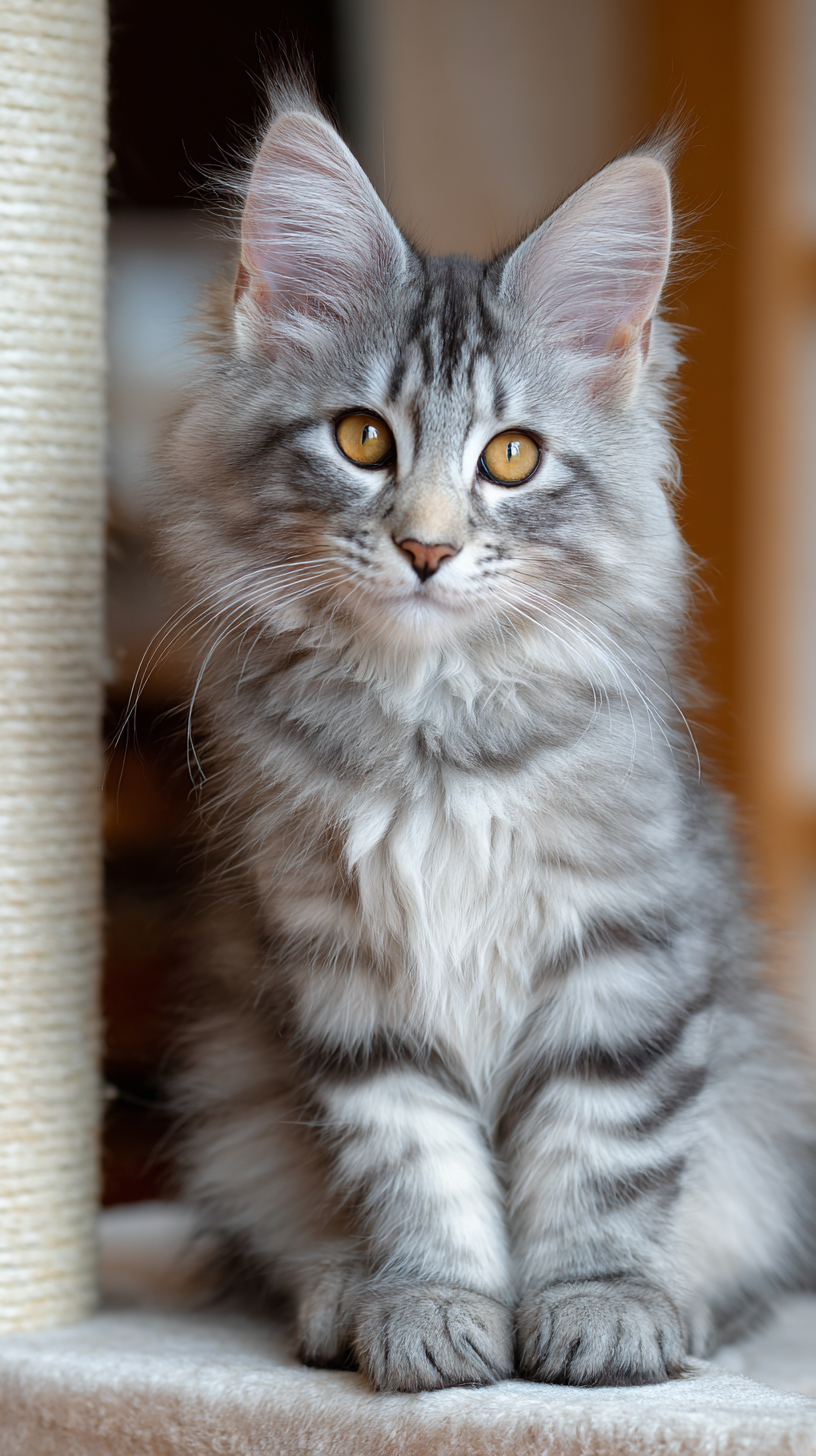
Read the Comments +